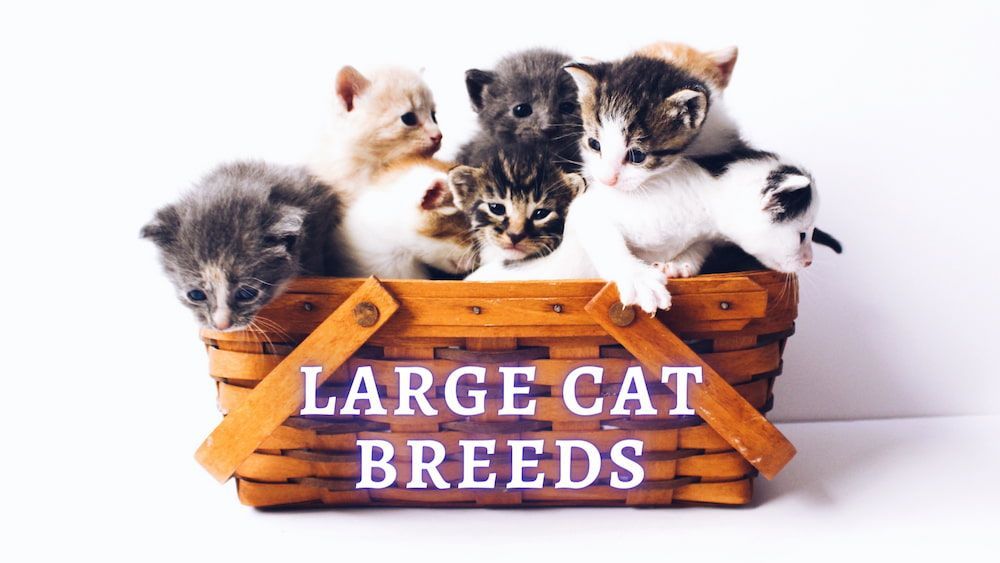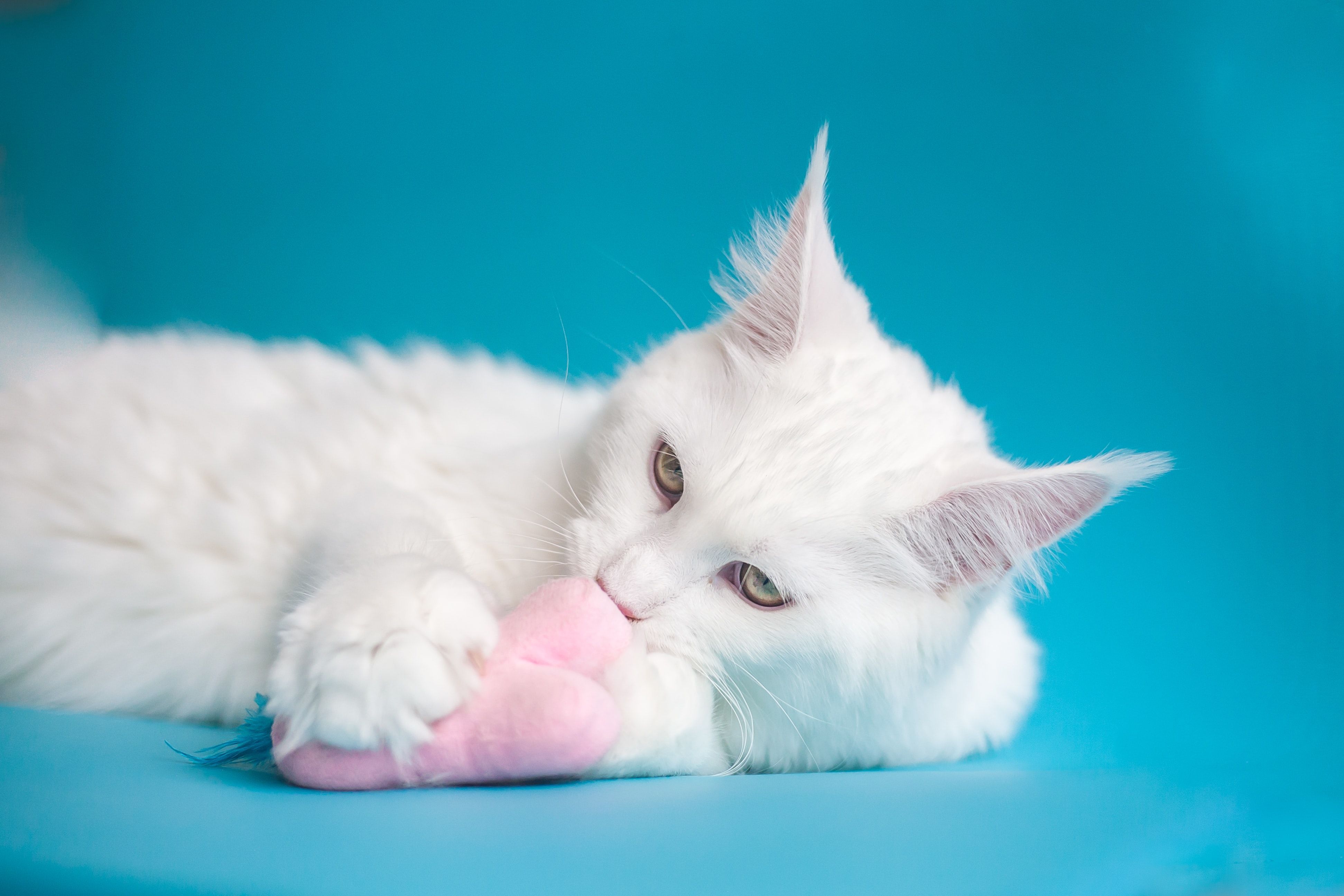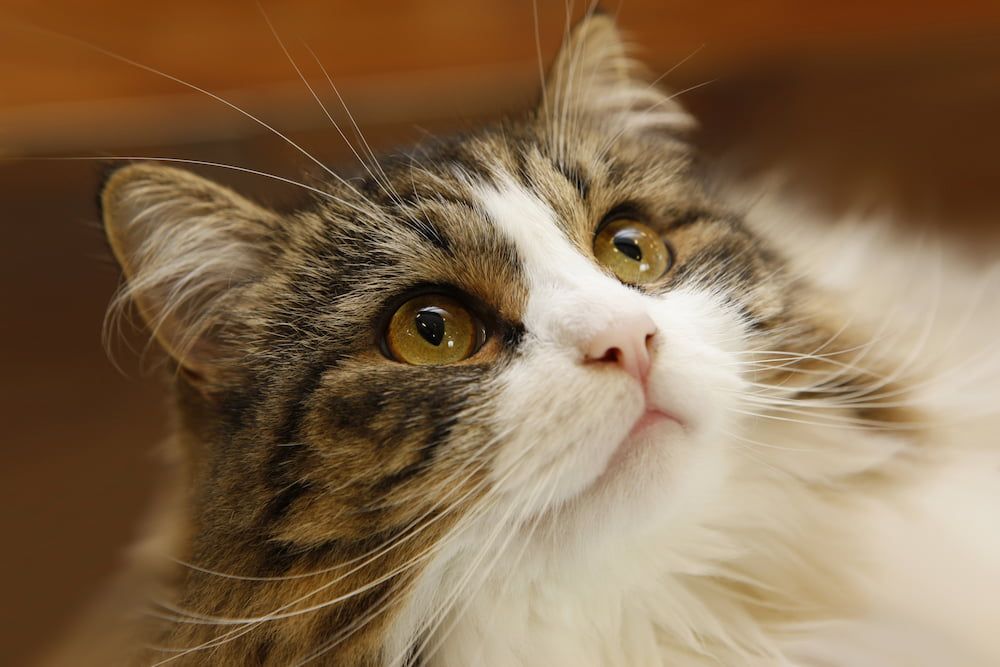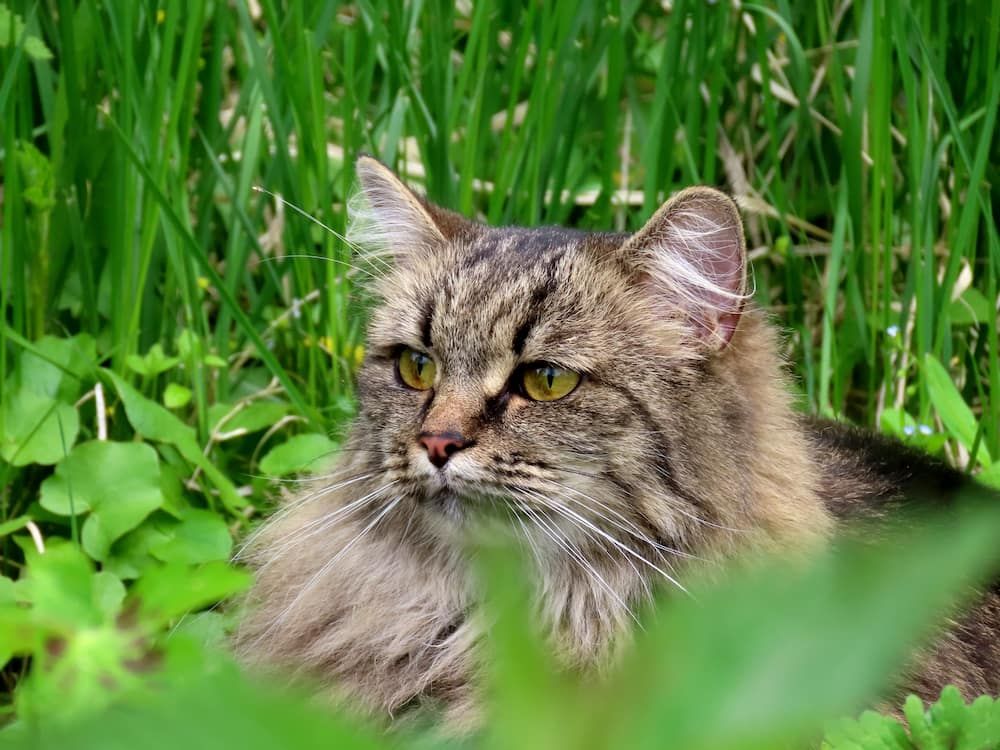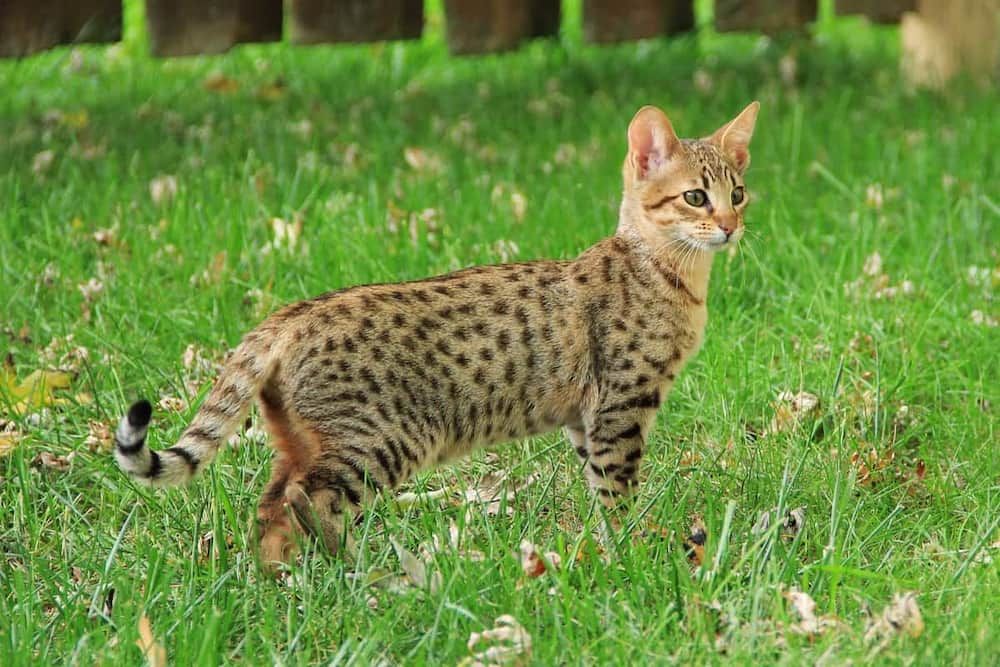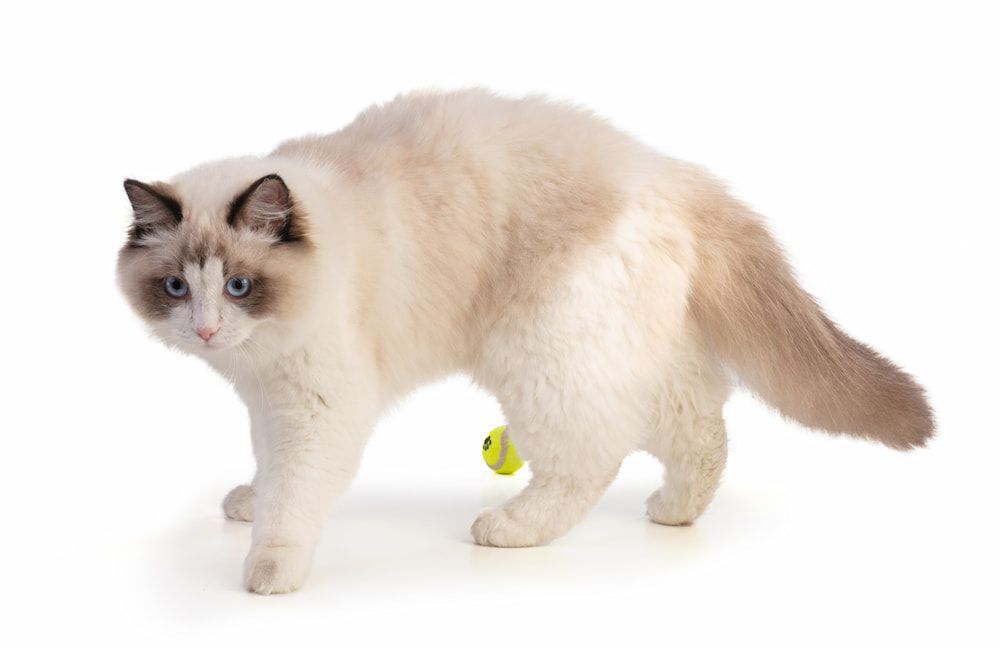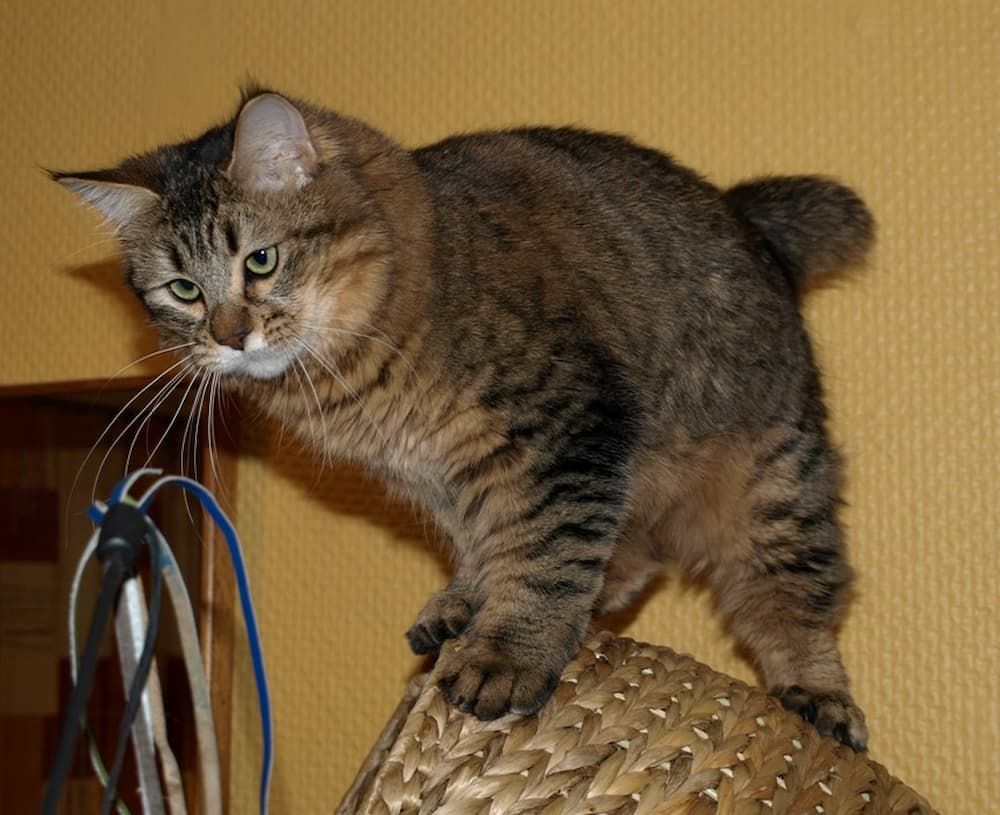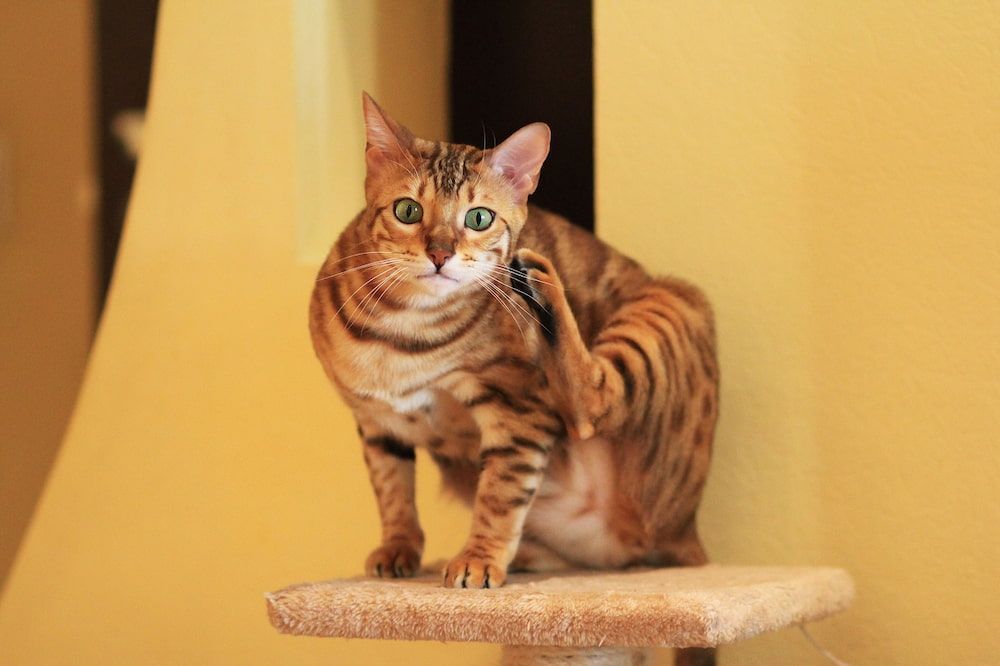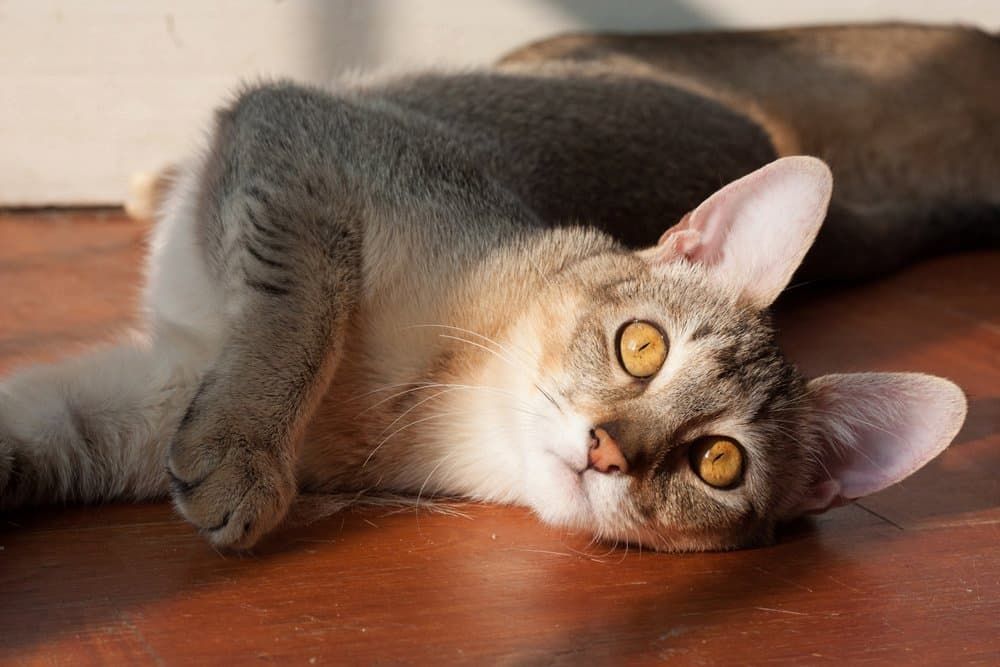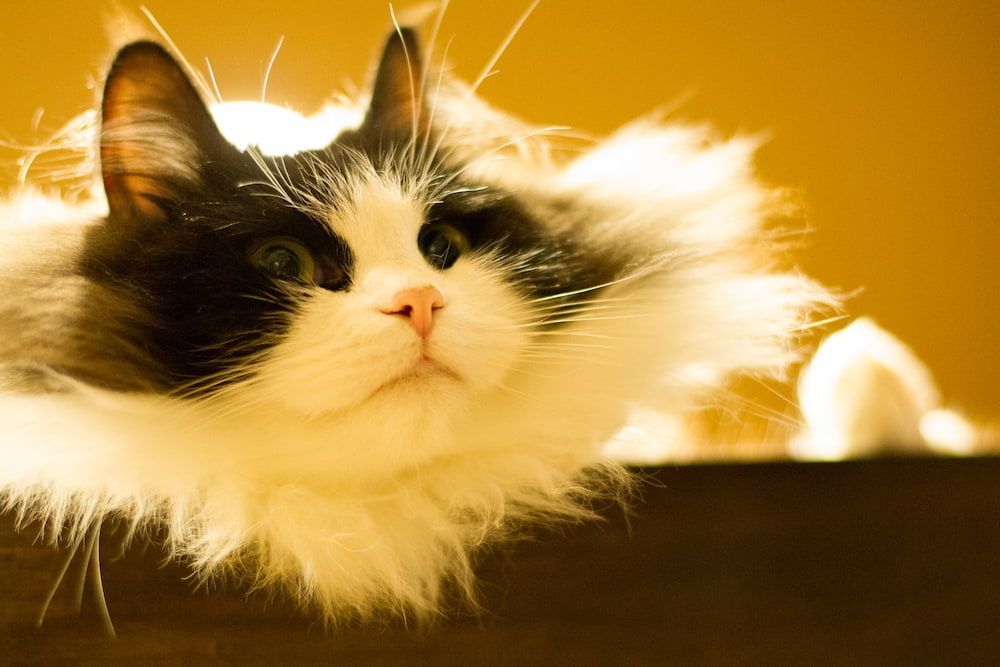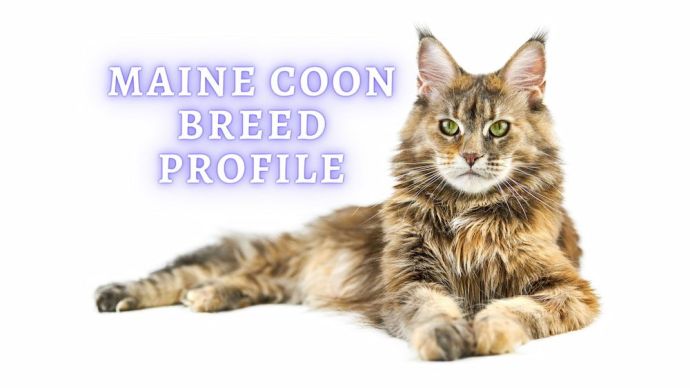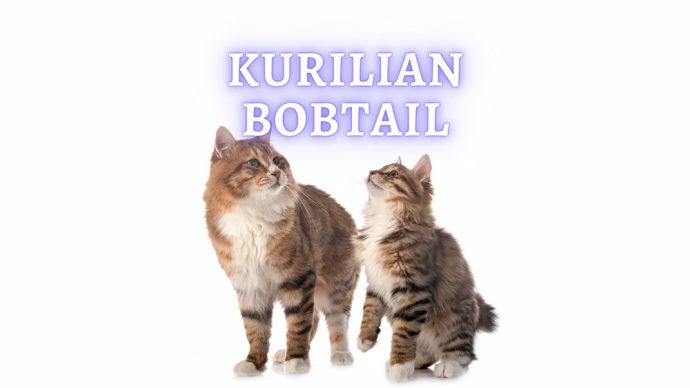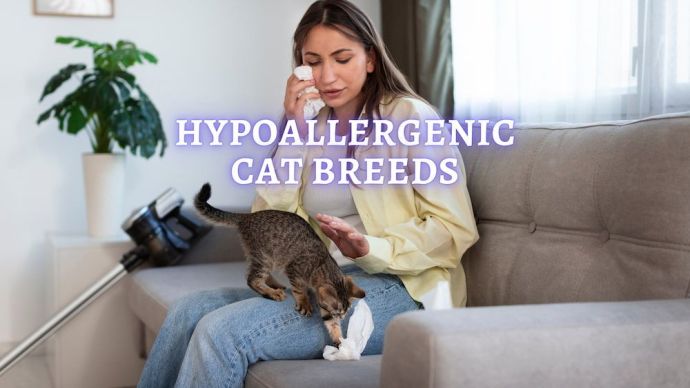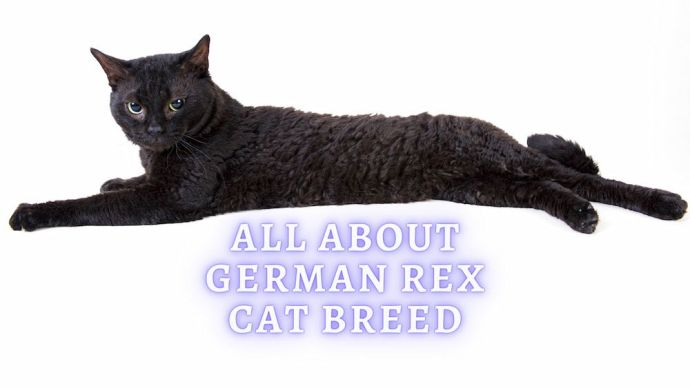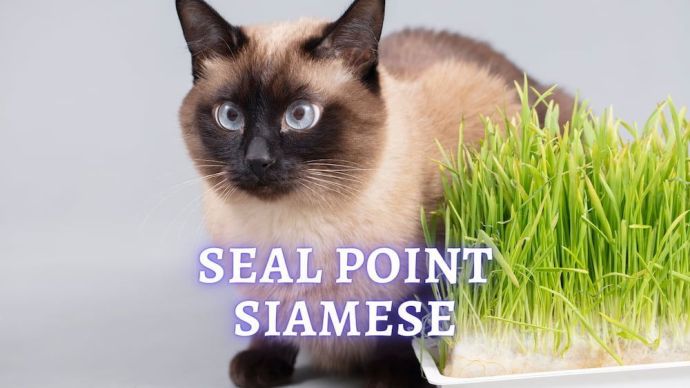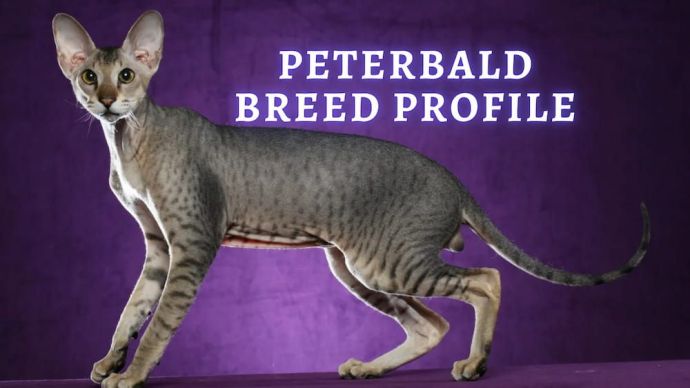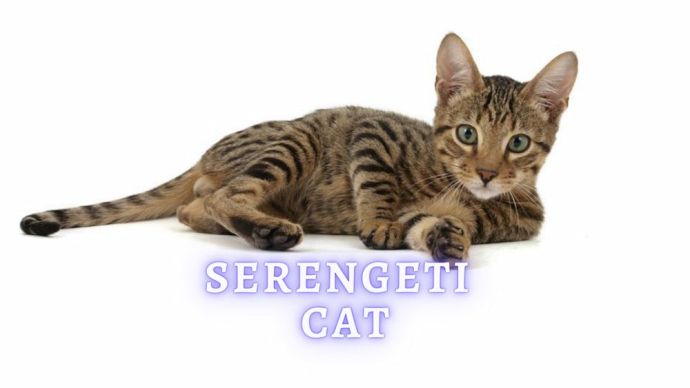10 Large Cat Breeds That Make Great Pets
Written by:
Author: Vicki Smirnova
Vicki Smirnova is a professional writer and editor who adores animals and helps readers get along well with their pets. She has been working in digital media for more than 5 years and has great experience writing content about lifestyle, including pets. Vicki specializes in dog health and nutrition, cat feeding, dog training. She is an aquarium lover and is passionate to write about fish care at home. Also, Vicki headed several websites and worked as a news editor.
View all 245 articlesLearn about our editorial process and veterinary review board.
Viewed: 233
Updated on: 05/12/2023
If you decide to bring a cat into the house, you have probably thought about its size, coat length, and character. In this article, we talk about the big breeds of cats. They are closely related to wild felines and have a unique appearance and good health.
Ten biggest domestic cat breeds you can own
This ranking of the most giant breeds of domestic cats includes 10 breeds whose males have an average body weight of more than 15 pounds. In mass, these cats outnumber dozens of the smallest dog breeds.
1. Maine Coon
Maine Coons are large, semi-longhair cats with elongated rectangular bodies and square heads with pronounced chins. An adult reaches the size of an average dog, and tassels on the ears are welcome but not a mandatory breed requirement.
Maine Coons are the largest animal of the domestic cat family and can be kept in an ordinary city apartment without worrying about the house’s order and the safety of children and other pets. Cats of this breed are absolutely non-aggressive and unobtrusive. A thoroughbred Maine Coon cat will not curl at its feet or attract attention with a loud meow, but it will always be in sight, accompanying the owner from room to room, and will not refuse to perch on the lap.
READ MORE: All About Maine Coon
2. Norwegian Forest cat
Norwegian Forest cats are often compared to Maine Coon and Siberian cats; however, the difference in their appearance is quite significant. The Norwegian cat has a triangular head, a straight Roman profile, and wide-set ears, continuing the line of the cheekbones.
There is also a difference in size. Norwegians are medium and large sizes and look harmonious and elegant. Norwegian cats are affectionate, talkative and playful. For the first 3 years of life, they behave like a kitten; therefore, be prepared that the animal will constantly move and hunt for any moving target. Over time, the cat will become calmer, but the attachment to its owner will not disappear. Norwegian Forest cats will continue to spend time with the owner and greet them upon their arrival home, and playfulness will be replaced by affection and the desire to get on their owner’s lap.
RELATED: Norwegian Forest Cat vs. Maine Coon
3. Siberian
The Siberian are one of the largest domestic cat breeds . These pets have developed muscles, a voluminous chest, and a thick coat with a dense, water-repellent undercoat. Siberian cats reach physiological maturity only by the age of 5 years.
Siberian cats combine a dog’s devotion to one owner and independence. Therefore, they are suitable for homebodies and busy people who spend all their time at work.
READ MORE: All About Siberian Cats
4. Turkish Van
Animals of the Turkish Van breed are one of the giant breeds of domestic cats. An adult can be distinguished by its pronounced musculature, broad chest, and limbs of medium length; muscle mass occurs during the first 3-5 years of life.
A distinctive feature of the Van cat is that it is considered heterochromia – eyes of different colors. Such cats can be pure white or in the standard Van color – a chalk-white body with contrasting markings on the tail and the muzzle.
These cats are intelligent, affectionate, and agile but require much attention in education/training. Therefore, they are only suitable for some people who find it challenging to find time to interact with a pet. Left alone, Vans are prone to anxiety, home destruction, and aggression. At the same time, taking a pet in your arms and petting it after a long day at work is not enough – Turkish Vans must move a lot and implement innate hunting skills.
READ MORE: Orange Cat Breeds
5. Savannah cat
The appearance of cats of this breed fully embodies that of a wild cat. An adult Savannah inherits from predatory ancestors an athletic, elongated body and neck, long limbs, and the same spotted color that distinguishes a wild cat from a domestic one.
Breeders and owners note in cats of this breed a lively mind, much activity, and a developed hunting instinct. Therefore, to keep the Savannah in the house, you need a large place and multi-level game complexes for high jumps.
Savannah cats do not tolerate drafts and low temperatures. Therefore, letting a cat outside during the cold season or keeping it in an unheated room is unsafe for its health.
READ MORE: All About Savannah Cats
6. Ragdoll
By character, these animals are calm, balanced, and even phlegmatic. They don’t mind playing a little but spend most of their time in passive contemplation. With pleasure, they bask on their knees and willingly allow themselves to be stroked.
Ragdolls have an exciting feature – they relax and fall into a stupor in human hands. They are devoted to the owner and, like dogs, follow them everywhere. They differ in a peculiar meow, more like the cooing of pigeons. Generally, they are in good health, but sometimes there are heart problems.
Ragdolls are friendly, quickly become attached to people, and calmly interact with children. They also get along with other animals without problems and do not show aggression, and loneliness is not well tolerated.
READ MORE: All About Ragdolls
7. Pixiebob
Pixiebob is an American young domesticated cats breed. With a short tail and powerful legs and body, it looks like a lynx. It is the only breed in the world that has multi-toed feet.
The nature of these cats is reserved, tactful and unobtrusive. They have great devotion to their owners, like dogs. They are wary of outsiders but not aggressive, and they love games and affection.
READ MORE: Cats That Look Like Leopard
8. Bengal
The Bengal is a large cat with a shiny coat, very well-developed muscles, and a thick tail that often hangs down to the ground. The Bengal outwardly resembles a wild cat: the characteristic thick, luxurious coat has a spotted color and marble stains. On a wide head are small ears and sideburns; the eyes are almond-shaped and black-edged; the tail is thick, tapering to a black tip. No other breed has the golden or pearly shimmery effect found in Bengals.
RELATED: Best Food for Bengal Cats
9. Chausie
Cats of the Chausie breed resemble small cougars, having inherited from wild ancestors long limbs with powerful, thick paws, a head small in relation to the body and a strong muscular body.
They are playful, sociable and curious; therefore, leaving your pet alone for the whole day is not recommended. For busy owners, it is better to purchase two Chausies or keep it with a medium-sized or large-sized dog. For those who spend most of their time at home, play outdoor games with the pet more often and even go outside with it on a leash – just interacting with it indoors in the evenings is not enough.
READ MORE: All About Chausie Cat
10. Ragamuffin
The Ragamuffin is a large cat breed with a long body. It has strong bones, a long tail, and plush fur. Ragamuffins appear to be larger than they really are. The Ragamuffin’s head is medium in size, but because of its fur, the muzzle seems larger. The ears are also of medium size and are located on the sides of the head, giving the muzzle a triangular shape. The paws are long and strong. The chin is usually well-developed, and the oval eyes are blue. The coat of the Ragamuffin can be of different lengths – from semi-long to long and is soft, velvety and silky.
Tips for caring for a big domestic cat
It is not difficult to keep cats of large breeds, but it is financially expensive. Such pets need high-quality premium or super-premium high-protein food. It is necessary to choose with a veterinarian a balanced high-protein food for big cats and include vitamins in the diet to maintain the integrity of the skin.
Such pets need regular medical examinations in a veterinary clinic. Big cats are predisposed to cardiovascular, musculoskeletal and urinary diseases. Therefore, they require close attention to diet and lifestyle.
Grooming may vary by coat type. Some breeds are prone to seasonal molting. You can comb out such pets no more than 1 time per week, and bathe them only when they get dirty.
Also, all large cat breeds need regular exercise. The animal must maintain its muscle mass. Therefore, the owner will have to install a play complex in the house or give the pet access to an exit to the street.
FAQ
What is the best big cat?
The Maine Coon is, by far, one of the largest cat breeds in the world. The Savannah breed is not inferior in size. Also considered large are such breeds as Norwegian Forest, Siberian, Turkish Van, Ragdoll, Pixiebob, Bengal, Chausie and Ragamuffin.
What are the world’s biggest domestic cats?
Maine Coon cats are the largest animals of the domestic large cat breeds that can be kept in an ordinary city apartment and not worry about the order in the house and the safety of children and other pets.
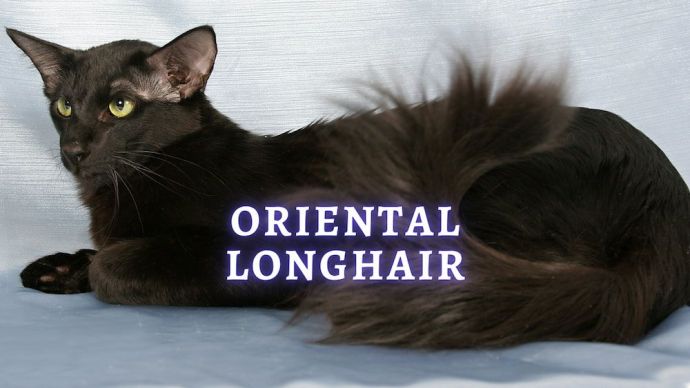 Cat Breeds Oriental Longhair: Oriental Longhair Cat Breed History, Temperament and Personality
Cat Breeds Oriental Longhair: Oriental Longhair Cat Breed History, Temperament and Personality - 486
- 0
 Cat Care Why Does My Cat Attack My Legs? 10 Reasons Why and What To Do About It (Vet-Approved Advice)
Cat Care Why Does My Cat Attack My Legs? 10 Reasons Why and What To Do About It (Vet-Approved Advice) - 45080
- 21
 Cat Veterinary Tips Cat Stomach Gurgling: Vet Advice on Why is Your Cat Stomach Gurgling?
Cat Veterinary Tips Cat Stomach Gurgling: Vet Advice on Why is Your Cat Stomach Gurgling? - 33729
- 4
 Cat Veterinary Tips My Cat Lost its Voice: Can Cats get Laryngitis? (Vet Advice)
Cat Veterinary Tips My Cat Lost its Voice: Can Cats get Laryngitis? (Vet Advice) - 22889
- 13









